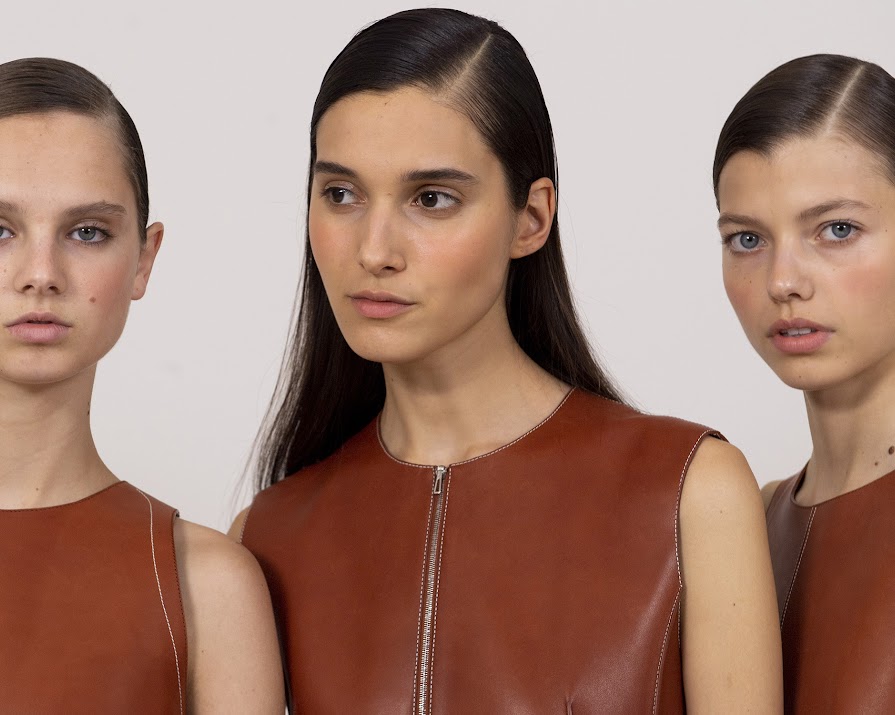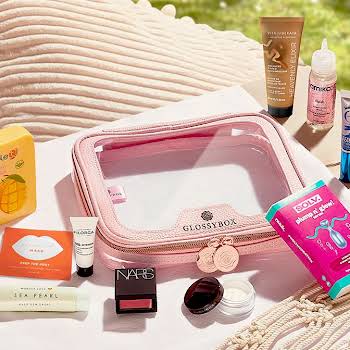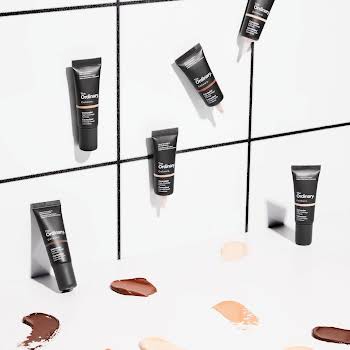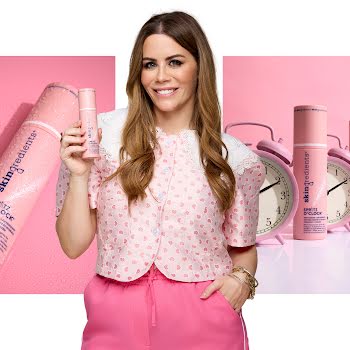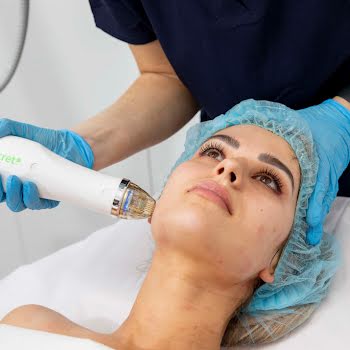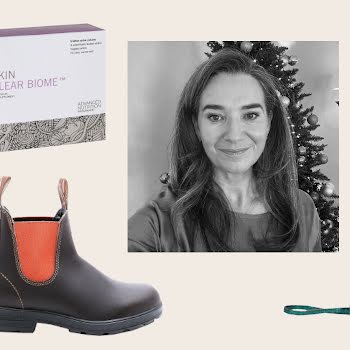By Holly O'Neill
22nd Oct 2020
22nd Oct 2020
Everything to know about the spot-busting skincare ingredient salicylic acid
Dr. Eithne Brenner, Medical Director at Faceworks aesthetic and skin clinic in Carlow breaks down salicylic acid.
Where does salicylic acid come from?
Salicylic acid (SA) is a safe, effective ingredient which has been in use in skincare products for over five decades. Both salicylic acid and aspirin are derived from willow bark and are very closely related chemical compounds. Bark extracts have been used as a medicine for over 2000 years, mainly to treat pain, fever and inflammation. Nowadays, virtually all SA is lab-made rather than extracted from plant sources. SA products are great for acne-prone and oily skin and they exfoliate and smooth the skin and un-clog pores.
Is it known by any other names?
Generally, the main form you want is salicylic acid, in percentages up to 3% for over the counter use. Different forms of SA can be used for their preservative and skin conditioning effects, such magnesium salicylate, sodium salicylate, or octyl salicylate. Hydroxy acids are a group of skin exfoliators and skin softeners. Many of us are familiar with AHA’s (alpha hydroxy acids) such as glycolic acid and lactic acid, and SA is the only type of BHA (beta hydroxy acid). PHA’s (poly hydroxy acids) are another type-these all vary in their molecule size and action on the skin.
What’s it used for? What’s the main benefit of using it?
SA is a star ingredient. It’s three main benefits are to exfoliate the skin, reduce inflammation and speed up skin cell renewal. It unclogs pores, minimises their appearance, cleans the skin, reduces redness and inflammation and speeds up healing of pimples. SA dissolves the bonds between dead skin cells in the top layer of the skin causing them to shed and thus smooths the skin. It has anti-microbial effects too. Some types of salicylates also have hair-conditioning benefits, and some preserve the effectiveness of other ingredients in the products. Although not a main treatment for rosacea, it may help this condition too, mainly by its anti- inflammatory effect. SA products are great for acne on the chest, shoulders and back as well as the face, and because it’s safe, gentle, and relatively inexpensive, you can get great results on these harder to treat areas.
How does it work in the skin?
Salicylic acid is lipid-soluble, which means it can penetrate the sebaceous fatty material in the hair follicle and exfoliate and un-clog the pores. AHA’s are water-soluble and can’t do this. SA loosens dead skin cells and exfoliates the outer layer of the skin. SA also acts to accelerate the skin cell cycle (which slows with age), and it can reduce hyperpigmentation, age spot, fine lines, and it also makes the skin softer-what’s not to love!
Who should use it?
It is a very versatile safe ingredient which has many uses. Its most common use is in acne- prone and oily skin to exfoliate and reduce inflammation. In higher strengths of up to 5%, it can benefit other skin conditions like keratosis pilaris (those pesky bumps on the upper arms and thighs), dandruff, seborrheic dermatitis, and psoriasis. You may notice it too in products for corns, calluses and warts in concentrations of up to 40%. It can also be used by us more mature ladies (and men) as it does have some benefits for reducing signs of photo-ageing, i.e. damage from UV rays, and it can lighten pigmentation, age spots, and wrinkles. SA can safely be combined with benzoyl peroxide for acne, and with retinoids used for acne or photo-ageing.
Should anyone not use it?
It’s not recommended for women who are pregnant/trying to get pregnant, or who are breast- feeding. As it is closely related to aspirin, it’s not safe for people who are allergic to aspirin, or allergic to related anti-inflammatory medicines (NSAIDS), such as ibuprofen, naproxen, and diclofenac. To avoid irritation, don’t let it come into contact with your eyes or any broken skin like cuts, scrapes or rashes. If your skin is sensitive and prone to reactions such as peeling, burning or irritation, go very gently with it, especially at the start of the treatment.
Where do it come in your skincare routine?
As SA is such a safe and relatively inexpensive ingredient, it can be added to many skin products, including face and body cleansers, toners, moisturisers, haircare, and home and clinic peels. Generally, preparations containing 0.5-3% can be used for cleansers and body washes that are rinsed off, and 0.5-2% is best for leave-on toners and moisturisers. If using cleansers containing SA, wet the affected area, gently rub the cleanser into the skin for 10 to 20 seconds. Do not scrub the skin. Work into full lather and rinse thoroughly, and then pat dry.
If you are using a cream, lotion, solution or gel, use a gentle cleanser first, pat dry and then apply a thin film of the product usually 1 or 2 times a day.
If you are considering peels containing SA, I recommend having them done in a clinic setting as they use much higher percentages, and special caution is needed to get the best results, and to avoid skin damage. SA peels may not suit darker skins because of the risk of hyperpigmentation.
Is there anything it shouldn’t be mixed with?
SA is generally very well-tolerated and safe, but there are a few cautions. To prevent too much skin absorption of SA, don’t over-scrub or over-exfoliate the skin prior to using SA. Don’t use SA if you are taking oral aspirin, as you may absorb too much, and it can cause toxicity. Don’t peel large body areas in one session for the same reason.
Is there anything to look out for when shopping for salicylic acid?
Decide which type of product you prefer to use, e.g. cleanser or moisturiser, and this will dictate what percentage you look for. Ideally it should be up to 2% SA for a leave-on product, and up to 3% for a rinse-off product. The effect will also depend on what other ingredients are in the product, such as added moisturisers, and SA can be encapsulated or buffered to reduce irritation and dryness, so identical percentage products can work differently.
Like all active products, start gradually and gently, every second or third day, making sure your skin can tolerate it before increasing the strength or frequency of use. If it causes irritation, stop for a few days and gradually re-introduce. Always wear a daily broad- spectrum sunscreen, as SA exfoliates the outer stratum corneum layer of the skin, making the dermis more prone to the effects of UV rays.
IMAGE Top Picks

Caudalie Vinopure Blemish Control Infusion Serum, €31
What is it?
Caudalie’s Vinopure range is a three-step-system complete with a purifying toner and mattifying fluid but the Blemish Control Infusion Serum is the hero of the range. It’s a lightweight gel that exfoliates and refines the texture of the skin while unclogging pores, but it gets bonus points for the add benefit of skin plumping and hydrating hyaluronic acid. Apply to the whole face after cleansing or just apply locally as a spot treatment.
What’s in it?
Caudalie’s Vinopure range is highly natural, and the Blemish Control Infusion serum is 98% so. The salicylic acid is derived from wintergreen, where salicylic acid is extracted from the plant in its pure and natural state, while organic rosewater controls sebum production.

The Ordinary Salicylic Acid 2% Solution, €4.90, now available at Arnotts
What is it?
“Clinical formulations with integrity” is The Ordinary’s tagline, which pretty much sums up all you need to know about the brand. Their 2% salicylic acid solution exfoliates the skin, fighting blemishes and over time, helps the clarity of the skin. This can be used directly on spots or applied all over the face.
What’s in it?
This is 2% salicylic acid with witch hazel, free from oil, alcohol, silicones and cruelty.

Dermalogica Daily Microfoliant, €59.50
What is it?
This is a gentle exfoliating powder that activates when combined with water and is suitable for all skin conditions. It leaves the skin soft, smooth and clean but it’s worth noting that although it may be called Daily Microfoliant, your skin won’t need it daily.
What’s in it?
This rice-based powder formula releases the exfoliator papain, salicylic acid and rice enzymes that work to micro-exfoliate dead skin. A blend of green tea, ginkgo and colloidal oatmeal calm the skin too.
Have a skincare question or ingredient you’d like debunked? Email your suggestions here.
Photography by Jason Lloyd Evans.
Read more: What is squalane and do I need it in my skincare routine?
Read more: The expert guide to embracing and growing out your grey hair
Read more: The future of the fashion show is uncertain, but here’s hoping Paris Haute Couture stays spectacular











